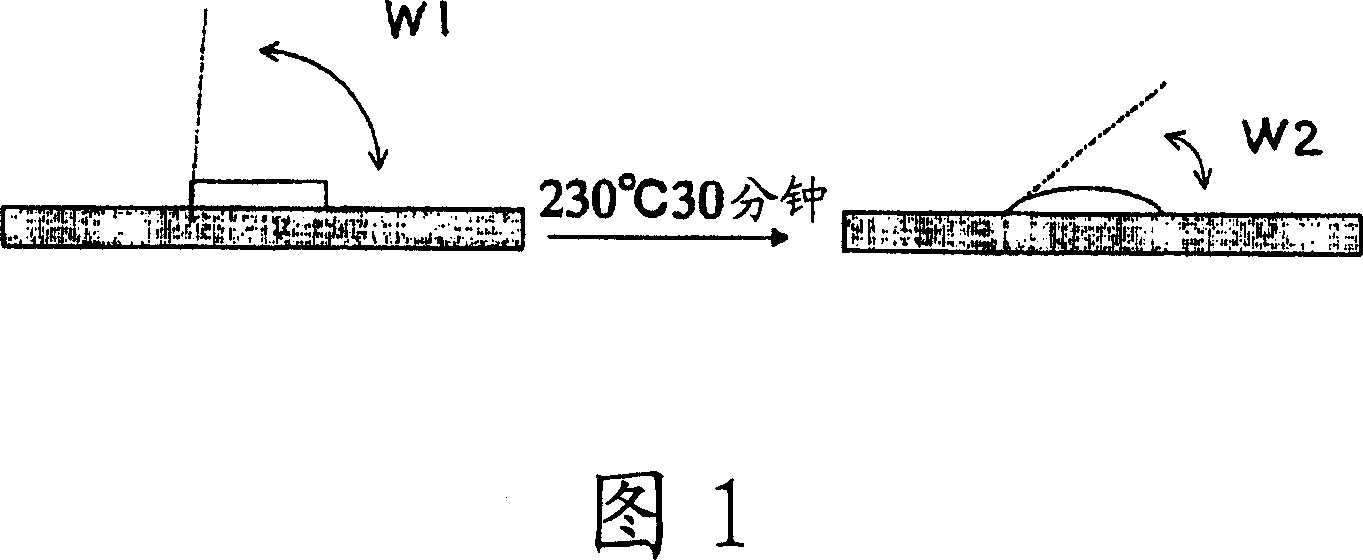Oxime ester compound, photopolymerizable composition and color filter utilizing the same
A compound and oxime ester technology, applied in the field of photopolymerizable compositions for color filters and photopolymerizable compositions, can solve the problems of difficulty in practical use, reduced adhesion, and difficulty in realizing resin BM, etc.
- Summary
- Abstract
- Description
- Claims
- Application Information
AI Technical Summary
Problems solved by technology
Method used
Image
Examples
preparation example Construction
[0271] The production method of the photopolymerizable composition of the present invention is explained below. In the present invention, the coloring material is generally preferably subjected to dispersion treatment using, for example, a paint conditioner, a sand mill, a ball mill, a roll mill, a stone mill, a jet mill or a homogenizer. The coloring material is formed into fine particles by the dispersion treatment, so that the coatability of the resist will be improved. Also, when a black coloring material is used as a coloring material, this treatment will promote improvement in light-shielding ability.
[0272] It is preferable to perform the dispersion treatment in a system in which a black coloring material and a solvent or an organic binder having a dispersing function are used in combination, or further the above-mentioned pigment dispersant is used in combination. It is particularly preferable to use a polymeric dispersant to obtain excellent dispersion stability ov...
preparation example 1
[0316] Preparation of Polymer Dispersant Solution
[0317] 32 g of trimer of toluene diisocyanate (produced by Mitsubishi Chemical Corporation, MytecGP750A, resin solid content 50% by weight, butyl acetate solution) and 0.02 g of dibutyltin dilaurate as catalyst were diluted and dissolved in 47 g of propylene glycol monomethyl ether acetate (PGMEA). Under stirring, 14.4 g of polyethylene glycol having a number average molecular weight of 1,000 with a methoxy group at one end (manufactured by NOF Corporation, UNIOX M-1000) and 9.6 g of polyethylene glycol with a number average molecular weight of 1,000 were added dropwise thereto. A mixture of polypropylene glycol (manufactured by Sanyo Chemical Industry Co., Ltd., SANNIX PP-1000), followed by further reaction at 70° C. for 3 hours. Then, 1 g of N,N-dimethylamino-1,3-propanediamine was added thereto, followed by further reaction at 40° C. for 1 hour. It was found that the thus obtained solution containing the polymer dispersa...
preparation example 2
[0319] Preparation of organic binders
[0320]200g of o-cresol novolac epoxy resin with an epoxy equivalent of 200g / eq and a softening point of 65°C, 72g of acrylic acid, 0.2g of p-methoxyphenol, 0.2g of dodecyltrimethylammonium chloride and 272g of PGMEA was put into a flask and reacted at a temperature of 100° C. for 8 hours (1 equivalent of acrylic acid reacted with 1 equivalent of epoxy group). Thereto was further added 42 g of tetrahydrophthalic anhydride, followed by reaction at 80° C. for 3 hours. The reaction solution was reprecipitated in water and dried in vacuum to obtain a carboxyl novolak epoxy acrylate resin. Neutralization titration was carried out with KOH, and the acid value of the resin was measured to be 50 mgKOH / g.
[0321] Dispersion of carbon black
[0322] According to the ratio of 50 parts by weight of carbon black (produced by Mitsubishi Chemical Corporation, MA-220) and 5 parts by weight of the polymer dispersant obtained in Preparation Example 1 f...
PUM
| Property | Measurement | Unit |
|---|---|---|
| Diameter | aaaaa | aaaaa |
| Thickness | aaaaa | aaaaa |
| Thickness | aaaaa | aaaaa |
Abstract
Description
Claims
Application Information
 Login to View More
Login to View More - R&D
- Intellectual Property
- Life Sciences
- Materials
- Tech Scout
- Unparalleled Data Quality
- Higher Quality Content
- 60% Fewer Hallucinations
Browse by: Latest US Patents, China's latest patents, Technical Efficacy Thesaurus, Application Domain, Technology Topic, Popular Technical Reports.
© 2025 PatSnap. All rights reserved.Legal|Privacy policy|Modern Slavery Act Transparency Statement|Sitemap|About US| Contact US: help@patsnap.com



